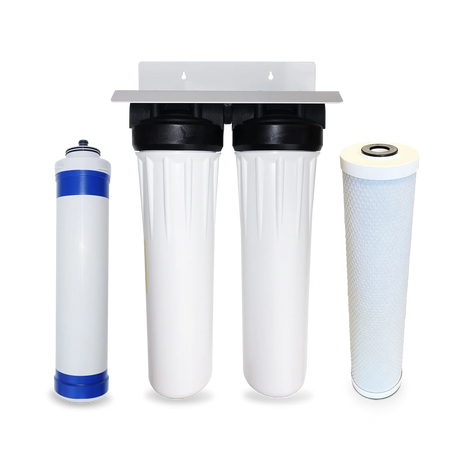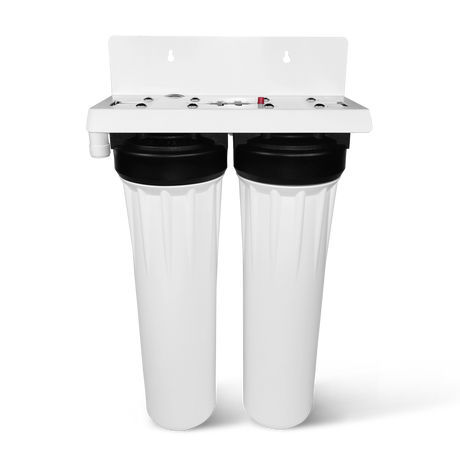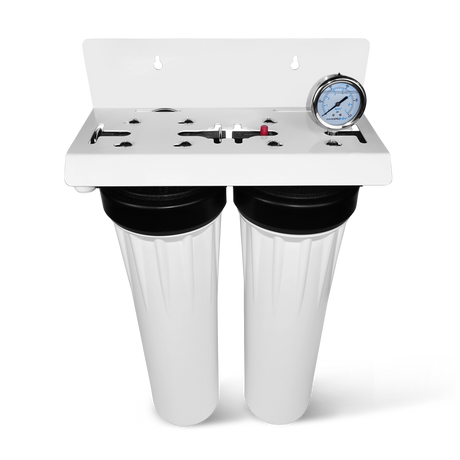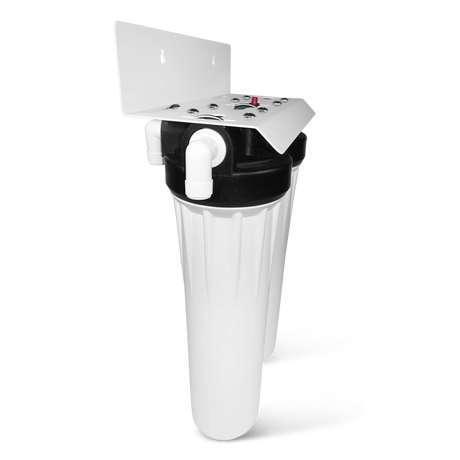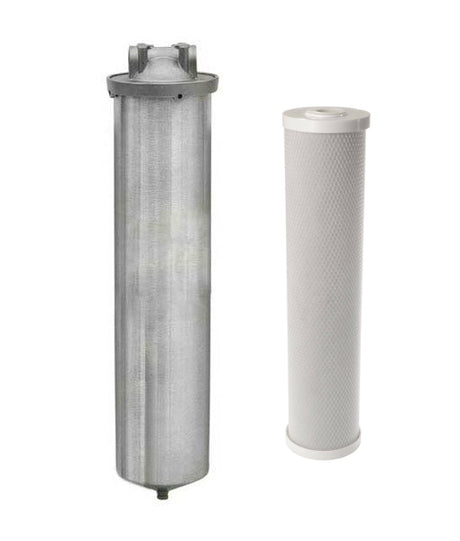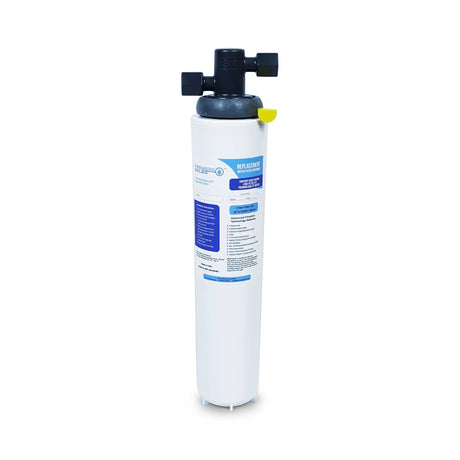Chloramines in Your Water: Health Risks and Effective Removal Methods
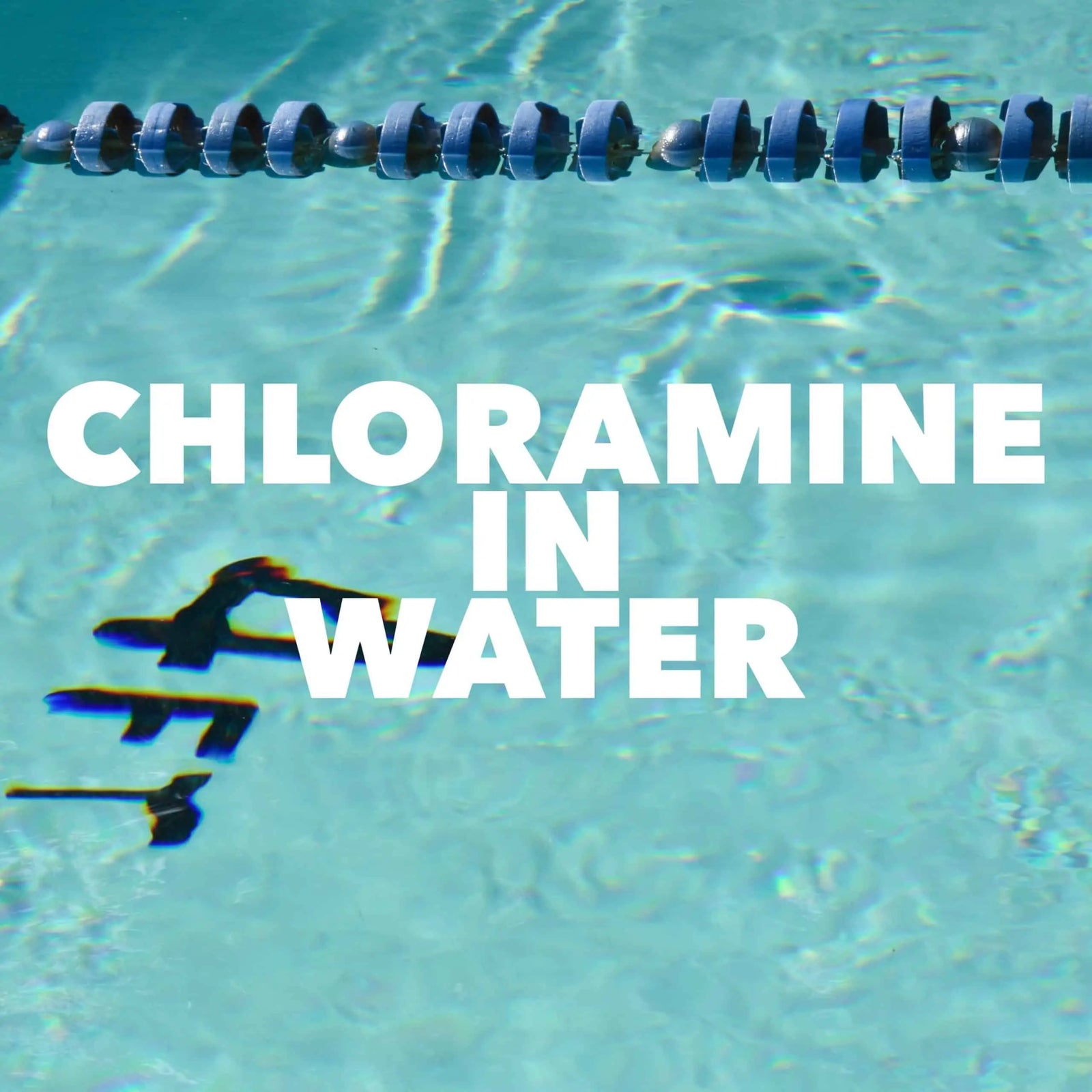
Chloramines are becoming increasingly common in U.S. municipal water treatment systems. These chemicals, a combination of chlorine and ammonia, effectively disinfect water and keep it safe over long distances. However, they also create unique challenges for homeowners.
These persistent chemicals have several drawbacks:
- They can cause unpleasant tastes and odors in your water.
- They may irritate your skin and eyes.
- When inhaled as vapor during showers, they can potentially lead to respiratory issues.
- They're known to corrode plumbing systems, which may leach harmful metals into your drinking water.
Unlike chlorine, which can evaporate or be removed by simple filtration, chloramines are tougher to eliminate. They require specialized treatment methods, such as catalytic carbon filtration, for effective removal.
As more people become aware of these potential risks, many households are taking action. They're turning to advanced water filtration systems to ensure their homes have clean, safe, and great-tasting water throughout.
Understanding Chloramines: Composition and Usage
Chloramines, specifically monochloramine, are used by public water systems to make drinking water safe. The chloramination process involves adding free chlorine (chlorine gas, sodium hypochlorite, or calcium hypochlorite) and ammonia to drinking water. Chloramines are sometimes preferred over chlorine due to their long-lasting disinfection properties. Although weaker than chlorine, their disinfectant characteristics persist much longer and remain stable without losing potency.
The typical concentration of monochloramine in treated drinking water ranges between 1 and 3 parts per million (ppm) as chlorine. For perspective, a healthy swimming pool typically contains 1-4 ppm chlorine.
Health Risks Associated with Chloramines
Chloramines can pose several health risks, potentially causing or exacerbating:
- Respiratory problems
- Skin problems
- Digestive and gastric issues
- Kidney and blood problems
- Immune system problems
The Centers for Disease Control and Prevention (CDC) states that chloramine levels up to 4 ppm are considered "safe" in drinking water. However, even at low levels, using a filter for chloramines is recommended. It's worth noting that chloramine doesn't kill pathogens in water as effectively as chlorine, so people with weakened immune systems should properly filter and purify their water.
Compelling Reasons to Remove Chloramines from Water
- Taste and odor: Chloramines cause an unpleasant metallic or chemical aftertaste and a harsh smell in water. The well-known "pool water smell" is actually caused by chloramines, not chlorine.
- Respiratory issues: Breathing chloraminated vapor from showers, baths, hot tubs, dishwashers, and other household appliances can cause respiratory problems.
- Skin and eye irritation: Chloramines can irritate your skin, cause bloodshot eyes after a shower, and lead to dry, flaky skin or painful breakouts. Pre-existing skin conditions like acne or eczema can be aggravated by chloraminated water.
- Digestive and gastric problems: Chloramine can damage digestive mucosa and cause stomach discomfort.
- Rubber deterioration: O-rings, gaskets, and seals break down over time when exposed to chloramines, potentially causing inconvenient and costly problems for household appliances.
- Metal corrosion: Chloramines can alter water's chemical properties, potentially corroding metal pipes and fixtures, especially when combined with low pH and alkalinity. This corrosion can introduce lead into the water supply if proper control measures aren't in place.
- Toxicity to fish and plants: Chloramines can harm fish's delicate organ systems and taint soil, removing essential nutrients for plants.
- Unsuitable for medical or laboratory settings: Water containing chloramines is not recommended for labs or medical purposes. For example, in dialysis treatment, chloramines in water can enter the bloodstream and alter hemoglobin (hemolytic anemia).
- Alters flavor profiles in brewing: Chloramines can affect the taste of coffee, tea, beer, and other brewed beverages.
Effective Chloramine Removal: The Power of Catalytic Carbon Filtration
The most effective way to reduce and remove chloramines from water is by using a catalytic activated carbon filter.
Catalytic carbon, also known as surface-modified carbon, is created by enhancing the structure of activated carbon. This process alters the electronic structure, creating spaces for chemical reactions and increasing its adsorption properties. When chloramines encounter catalytic carbon, they bond chemically to the carbon's surface through chemisorption.
Catalytic carbon is superior to standard activated carbon, offering better chloramine removal abilities and higher capacities to reduce or remove other contaminants.
Top Water Filtration Systems for Chloramine Removal
A whole house water filter is the most comprehensive solution for removing chloramines, as it treats all the water used in your home. For those focusing solely on drinking water, under-sink water systems are also effective.
Best Whole House Water Filters for Chloramines
0.02 Micron Ultrafiltration Membrane with 0.5 Micron Catalytic Carbon Filter
The PS-2000PB system protects against chloramines, bacteria, viruses, parasites, lead, PFOA, PFOS, chlorine, cysts, particulates, and more. It offers:
- Flow rate up to 8 gallons per minute
- Ultrafiltration membrane has innovative flushing capabilties
- Replace membrane every 3-5 years
- Annual catalytic carbon filter replacement
0.5 Micron Catalytic Carbon Filter
The BG-20PB filter reduces/removes chloramines, lead, heavy metals, chlorine, VOCs, cysts, sand, rust, and sediment. Key features include:
- 96%+ reduction of lead
- 95%+ reduction of VOCs
- 90%+ reduction in chlorine at 2 ppm
- 83%+ reduction in chloramine at 3 ppm
- Flow rate up to 7 gallons per minute
Best Under Sink Drinking Water Filter for Chloramines
0.2 Micron Catalytic Carbon Filter
The PS-1HFC is a pharmaceutical-grade filtration system that offers:
- Removal of chloramines, chlorine, lead, VOCs, asbestos, TTHMs, MTBE, and pharmaceuticals
- Retention of vital minerals naturally found in water
- 2-year filter life (10,000 gallons)
- Suitable for home, office, and other applications
By choosing the right filtration system, you can effectively remove chloramines and other harmful contaminants from your water, ensuring safer and better-tasting water for all your household needs.
Taking Action: Protecting Your Home and Health from Chloramines
In conclusion, chloramines present a complex challenge in our water systems. While they serve an important purpose in water treatment, their potential health risks and impacts on our homes cannot be ignored. From the unpleasant taste and odor to more serious concerns like respiratory issues and plumbing corrosion, chloramines affect both our quality of life and potentially our long-term health.
Understanding the nature of chloramines is the first step in addressing this issue. Unlike chlorine, these persistent compounds require specialized filtration methods for effective removal. Catalytic carbon filtration stands out as a highly effective solution, capable of tackling chloramines along with other contaminants in your water.
The good news is that homeowners have options. Whether you choose a whole-house filtration system to protect all water sources in your home or opt for a point-of-use solution for drinking water, advanced filtration technologies can significantly reduce or eliminate chloramines from your water supply.
As we become more aware of what's in our water, taking action to ensure its safety and quality is crucial. Investing in a proper water filtration system not only improves the taste and smell of your water but also provides peace of mind knowing that you're protecting your family's health and your home's plumbing infrastructure.
Remember, clean, safe water is not a luxury—it's a necessity. By addressing chloramines and other contaminants in your water, you're making an important investment in your health, your home, and your overall quality of life. Take the time to assess your water quality and explore the filtration options available to you. Your future self will thank you for the clean, great-tasting water and the potential health benefits that come with it.


